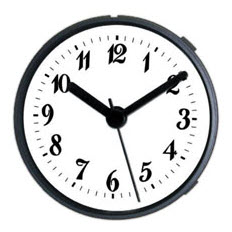Clock Parts Collections
Clockmaking with Individual Clock Hands as well as Dials
Clock hands and also dials are actually the focal point, and also it is not shocking that clockmakers dedicate their efforts to incorporate them noticeably. This is not to minimize the role of the clock movement in correctly placing the turn over the face continuously. Yet the activity is pure function and remains hidden; style (form) should be drawn out with the visual parts.
Building clocks from square one entails choosing your own parts, as well as you should pursue an unified, harmonious look. The hands and also dial are the natural emphasis, but the total performance of the watch has to be established first. Including specific attributes or uniqueness might have an influence on one or both of these component parts.
There is a fantastic variety of clock movements around, each with a particular mix of functions. The necessary feature is timekeeping, implying revealing the present time constantly to whatever extent wanted. That is, though the most usual cycle is twelve hrs (when everything returns to its starting state), some movements extend the cycle to something longer, potentially calling for a various looking dial and maybe involving an added hand.
For example, you can get a 24-hour motion, biking once a day as opposed to twice. The equivalent dial will reveal an additional loads numbers, either doubling up with the first dozen or spread out over the area; the latter style is unavailable with the exception of big clocks. One activity turns the hour hand two times a day, the various other daily.
Longer cycles are the week as well as the month. These motions need calibrated dials that show the days of the week or days in the month, respectively. An additional hand indicate the matching day or date.
Still various other movements supply keeping track of tide level (for those in coastal setups) or reporting weather phenomena such as temperature level as well as moisture. The dials and hands for these are specially designed to work with them, and may be similar to the circular format or might include a single hand going back and forth over a limited range.
As soon as your clock movement is selected, you can transform your focus to the hands as well as dials, focusing on sizes as well as styles. Dial and hand dimensions have to match, obviously, and their styles should be complementary. Using include a series of forms and shades, and also dial lettering comes in Arabic or Roman (or signs).
Dial diameter dimensions range from a few inches to possibly six feet (with huge clocks installed directly on a wall as opposed to looking for large enough instances). Once you go above about 14 inches, the minute hand comes to be as well hefty for a regular movement to turn. In such cases get a "high-torque" version of the same motor you have actually picked, and it must perform effectively.
Give some thought to whether you desire your clock to have a used, as well as if so, whether you want the ordinary tick-and-stop (distinct) activity or a continuous, quiet move activity. The electric motor should sustain one action or the other, as well as you can choose simply not to install the pre-owned if it seems additional. clock dials
When you understand the essentials of building watches from components, you might desire to explore other elements such as appearing chimes or reproducing older clocks with oscillating pendulums. But essential clockmaking begins with specific clock hands as well as dials.

Comments
Post a Comment